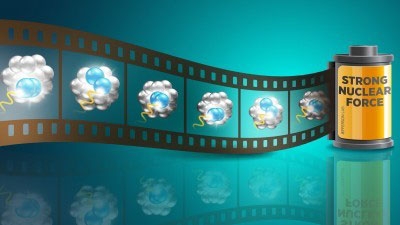The Science
The strong force is one of the four fundamental forces of nature, along with gravity, electromagnetism, and the weak nuclear force. The strong force binds protons and neutrons within the nucleus of the atom, creating one of the densest environments in nature. Nuclear physicists can now study the strong force with a novel method of accessing the space between protons and neutrons within a nucleus. The first direct probes have tested the validity of leading theories that describe the interactions between protons and neutrons in nuclei.
The Impact
This research confirms that current theoretical models of the strong force describe the behavior of protons and neutrons quite well. This is even true in dense nuclear environments, where protons and neutrons can be squeezed very close together into what nuclear physicists call short-range correlations. In these instances, the particles appear to overlap each other briefly before flying apart. This research also has implications for the structure of neutron stars, where it’s expected that protons and neutrons can also overlap.
Summary
Nuclear physicists have essentially captured snapshots of protons and neutrons that were very close together in states known as short-range correlations. Researchers compared these snapshots to different state-of-the-art models for the strong nuclear force. The most successful model was developed at Argonne National Laboratory and indicates that protons interact with other protons differently compared to neutrons at short distances. As the distance between the correlated particles shrinks even further, the nuclear force interaction changes as well. In this case, the proton-proton and proton-neutron interactions are very similar and are marked by a harder, repulsive core. This core of the strong nuclear force has never before been directly accessed experimentally inside a nucleus. Researchers verified these findings across a range of different nuclei, from carbon to lead. They have implications for the structure of neutron stars since scientists expected that protons and neutrons overlap in the neutron star environment. The next step is to verify these results on an even wider range of nuclei and at higher precision.
Funding
This research was funded by the Department of Energy Office of Science and based on analysis of data from the Continuous Electron Beam Accelerator Facility, a DOE Office of Science user facility at Jefferson Lab.


